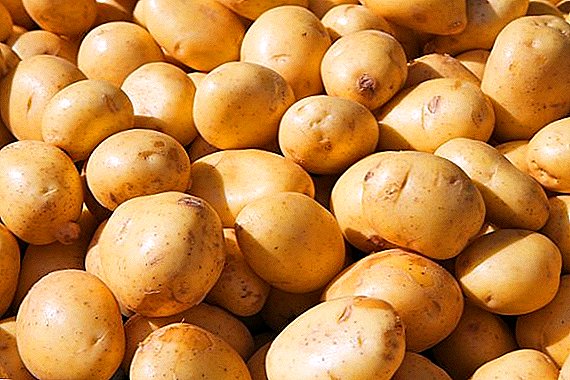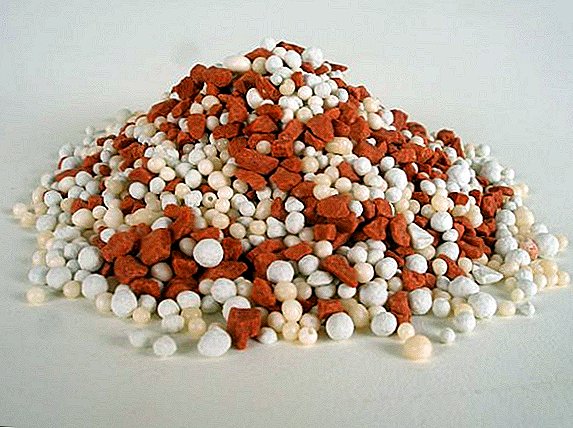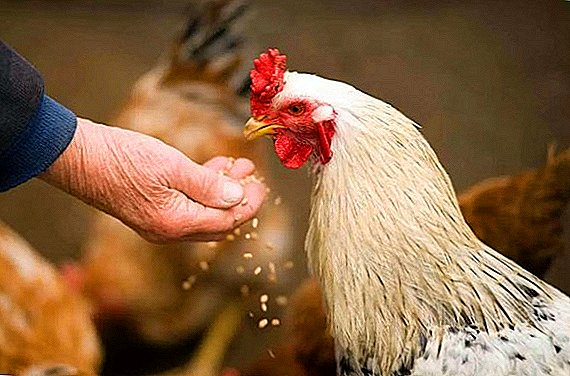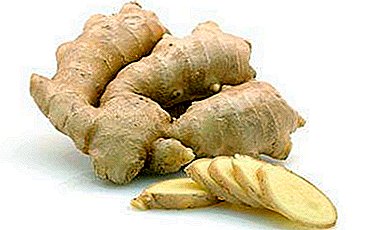
How much work and care it takes to grow a good grape harvest! But it is not always possible to protect him from diseases and other dangers.
One of the most common diseases of grapes that can kill a significant part of the crop - oidiumwhich is otherwise called powdery mildew.
Signs of Grape Infection
 Oidium primarily affects berries, but also leaves, stems - the whole bush, or rather, the entire above-ground part of the bush.
Oidium primarily affects berries, but also leaves, stems - the whole bush, or rather, the entire above-ground part of the bush.
The appearance of a grayish silver or off-white plaque, similar in texture to the flour, is most often noticed for the first time on the upper side of the leaves. When severely affected, gray patches cover the grapes, leaves on both sides and green shoots. Grapevine looks like sprinkled with ash.
Ripening berries, if they are affected at an early stage of development, often crack. At the same time their seeds look out. The berry may not stop growing, but remains very acidic, and a rough scar appears at the site of cracking. Yet often the berries stop growing, and after a short time they dry out.
The affected berries cannot be used for processing, as the taste of mold will be strongly pronounced.
If the leaves and berries are already formed, they are not affected by oidium, unlike the young and ripening parts of the plant.
A strongly afflicted bush is densely covered with a gray bloom, many leaves curl, berries dry up. Such a shrub can produce an unpleasant peculiar smell, comparable to the smell of rotting fish.
In the photo below you can see the appearance and signs of oidium on grapes:






Causes of Oidium
Oidium is a fungal disease. Its pathogen is called Uncinula necator Burr. (or Oidium tuckeri Berk.). In Europe, oidium has been known since the middle of the 19th century, when it was imported from North America along with plant food.
Other names for this disease are: powdery mildew, Oidium, Uncinula Necator and the popular name is pepelitsa, and the wrong name is often used - iodium on grapes
 In the form of mycelium, the culprit of the disease overwinters in the body of the plant — in such tissues as the kidneys or annual shoots. It is also found in fallen autumn leaves and clusters. That is why it is important to clean and destroy various organic garbage before hibernation so that no pathogens appear in the spring.
In the form of mycelium, the culprit of the disease overwinters in the body of the plant — in such tissues as the kidneys or annual shoots. It is also found in fallen autumn leaves and clusters. That is why it is important to clean and destroy various organic garbage before hibernation so that no pathogens appear in the spring.
In spring, the mycelium forms the so-called conidia (disputes). With the onset of warm days, short chains of conidiums are picked up by the wind and spread them around the district over considerable distances, striking new vineyards.
Primary infection of plants occurs with virtually no outward signs. The appearance of powdery mildew on grapes is the second stage of the disease.
The smallest disputes can cause several waves of infection in just one season. For the development of the disease, increased humidity is not necessary, and the temperature range is from + 5 ° C to about + 35 ° C. If the winter was mild and the spring is warm and wet, the signs of the disease can appear very early. And above all, the youngest shoots will suffer.
Control measures
 It is important to properly plant vines, given the prevailing wind direction.
It is important to properly plant vines, given the prevailing wind direction.
It is necessary to carefully care for the soil, not to abuse mineral fertilizers, to get rid of weeds. Bushes should not be too thick and evenly lit.
So, what to do and how to deal with powdery mildew on grapes? Chemical treatment consists of spraying one or two percent lime sulphuric water. You can use 1-2% solution of DNOC (dinitroortocresol), however, it is necessary to constantly remember about its high toxicity and observe safety measures.
Here are some more fungicides that are effective in combating oidium:
- Tiovit Jet.
- Topaz.
- Fundazol.
- Fast
- Byleton
Another effective way: the processing of grapes 1% suspension colloidal sulfur or 0.5% suspension of 80% sulfur powder. If the weather is hot (over 20–25 ° C), spraying is replaced by dusting with finely ground sulfur.
The effect of sulfur preparations rarely lasts more than 10 days. After this, new viable spores of the fungus appear, they germinate within a few days, and the disease gives another round. Therefore, if the vineyard is heavily affected oidium, processing should be repeated at least two weeks. If it rains heavily and takes away the chemicals, the treatment is repeated.
The sulfur prepared for processing must be completely dry and thoroughly ground. From the day of the last treatment with sulfur to the beginning of the harvest, no less than 56 days should pass.
Of folk remedies To combat oidium (powdery mildew) on grapes, treatment with the best results baking soda (from 0.5% to 1%) with the addition of laundry soap. For 10 liters of water take 50 g of soda and 40 g of soap. Baking soda has no side effects, safe for children and pets.
Prevention
 The main condition is the access of fresh air to all parts of the vine, good ventilation, aeration of the soil.
The main condition is the access of fresh air to all parts of the vine, good ventilation, aeration of the soil.
Drops of water or dew do not play a special role in the spread of the disease (this dependence is much stronger observed in another dangerous disease, mildew). On the contrary, the rains partially wash away the spores of the fungus, and the oidium does not develop too much.
Hot and dry weather contribute to the spread of the disease, while the leaves dry out, curl and fall prematurely.
The most dangerous period when oidium is booming is warm, humid days with air temperatures of + 20-25 ° C.
Varieties subject to illness
Very many varieties of European grapes suffer from this disease. Among them:
- Cabernet Sauvignon;
- Cardinal;
- Madeleine Angévin;
- Merlot;
- Moldova;
- Pinot Gris;
- Rkatsiteli;
- Chardonnay;
- and some other varieties.












